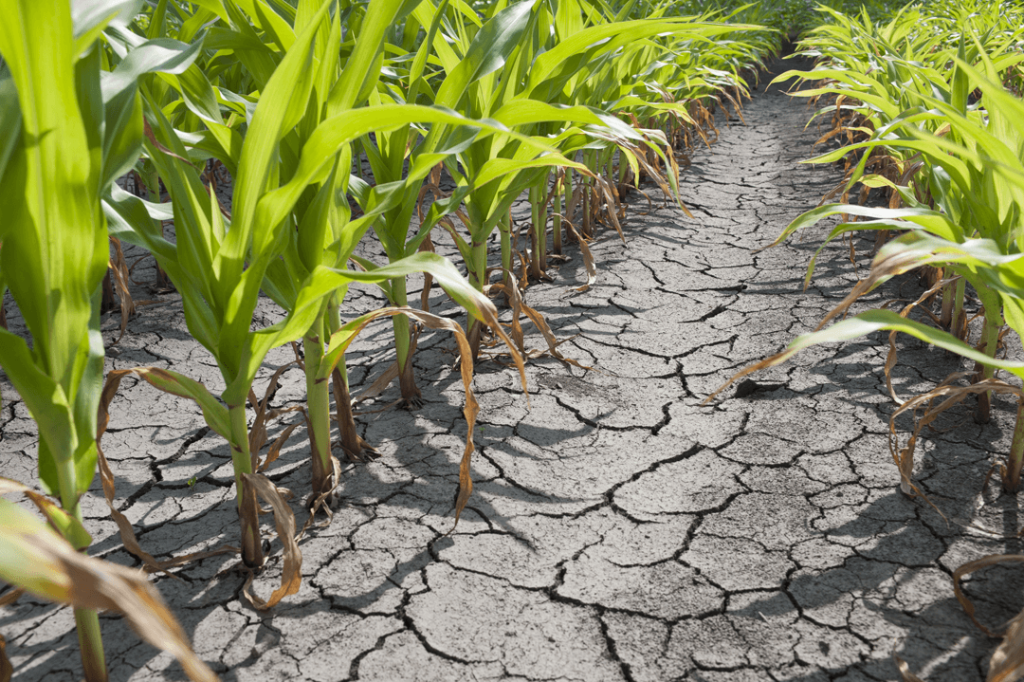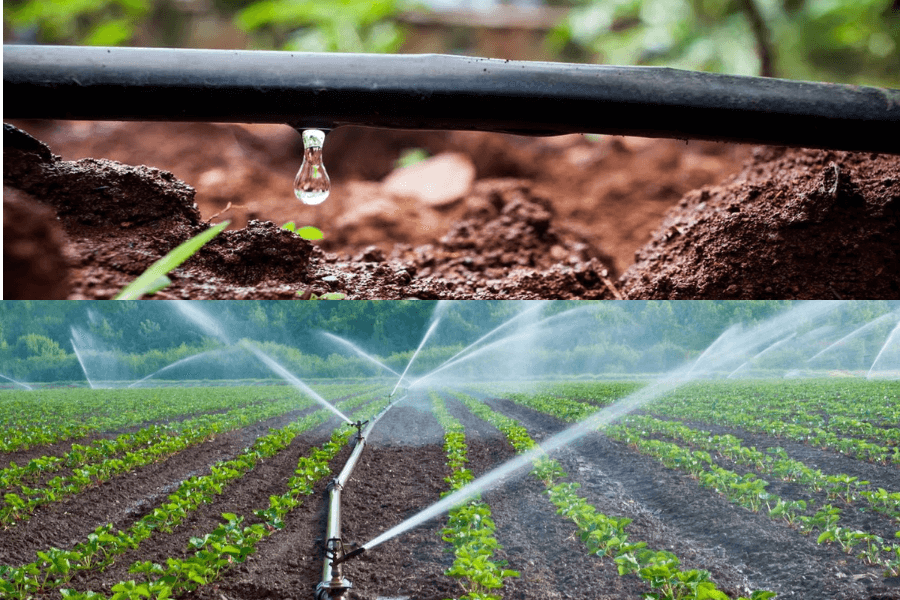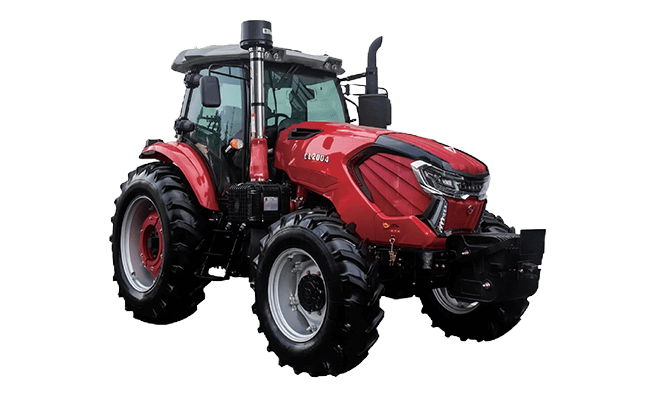The intensification of the El Niño phenomenon has made this planting season especially difficult for rice farmers in Southeast Asia. The persistent drought has left the rice fields in northeastern Thailand, which should have been lush and green, with most seedlings wilting. Farmers in Vietnam’s Mekong Delta have been running around with hoses daily but still can’t keep up with the evaporation rate. Many have had to reduce their planting area or delay sowing. The regional reduction in output has directly led to a decline in rice exports, pushing up global rice prices. For farmers whose primary income comes from rice cultivation, the drop in earnings has become a certainty. Countries that rely on rice imports from Southeast Asia are also facing food security pressures.

In the face of this passive situation, China’s intelligent irrigation machines have significantly improved water resource utilization, ensuring that every drop of water precisely nourishes the rice plants. High-efficiency direct seeding and transplanting machines can also seize the right planting time, avoiding the peak drought period and laying a solid foundation for yield. Flexible models designed specifically for hilly and scattered land, combined with high-temperature-resistant features, ensure smooth operation even in complex environments without delaying planting. Moreover, with intelligent monitoring and remote control functions, there is no need for extensive manual supervision. Farmers can scientifically adjust plans and ensure a stable harvest.
Traditional rice planting methods are increasingly powerless in the face of changing climates. Farmers urgently need a method that can withstand risks and improve efficiency. How has Chinese agricultural machinery solved this crisis?
Contents
- 1 I. Under Drought, Traditional Farming Meets Modern Climate Challenges
- 2 II. Key to the Breakthrough: China’s Precision Response Plan
- 2.1 The first step in China’s agricultural machinery breakthrough — precision water-saving, turning passivity into initiative:
- 2.2 The second step in China’s agricultural machinery breakthrough — intelligent field management:
- 2.3 The third step in China’s agricultural machinery breakthrough — tailored specifically for Southeast Asian planting:
- 2.4 III. What Makes Chinese Agricultural Machinery Cost-Effective?
- 2.5 Supply chain advantages:
- 2.6 Labor and transportation advantages:
- 2.7 IV. Summary:
- 3 FAQs:
I. Under Drought, Traditional Farming Meets Modern Climate Challenges
The prolonged drought has thoroughly exposed the shortcomings of traditional planting models, with every issue contributing to the inability to increase yields:

First, inefficient irrigation becomes a fatal weakness. Southeast Asia still widely uses flood irrigation, with water resource utilization below 50%. This is particularly problematic during drought periods.
Second, planting schedules are severely misaligned. Traditionally, farmers usually transplant seedlings after the rainy season begins. However, the delay and uncertainty of rainfall today have caused confusion in the entire production cycle.
Most importantly, production costs continue to rise. Drought forces farmers to invest in additional pumping equipment and labor, which further erodes their profit margins.
II. Key to the Breakthrough: China’s Precision Response Plan
Chinese agricultural machinery has provided a comprehensive solution for Southeast Asian planting scenarios and climate challenges, with each advantage directly addressing the actual planting needs:
The first step in China’s agricultural machinery breakthrough — precision water-saving, turning passivity into initiative:
Intelligent irrigation machines and drip irrigation equipment can determine the water requirements of rice at different growth stages. They provide more water when needed and less when not, saving 30%-50% more water compared to traditional flood irrigation. Even in drought conditions, they can effectively maintain the moisture levels for the crops.
Small-scale direct seeding and transplanting machines help shorten the planting period, allowing rice to avoid the most severe drought periods. Data shows that after using these devices, yields can increase by 10%-15%.
Meanwhile, the battle to seize the right planting time must also be fought.

Previously, in Vietnam’s Tien Giang Province, ten Chinese-made rice direct seeding machines were planting at a rate of 60 hectares per day.
“We must complete the sowing before the next effective rainfall,” said local operator Nguyen Wen Gui. “The efficiency of these direct seeding machines is 30 times that of manual transplanting, and the sowing is uniform, resulting in even seedling emergence.”
The second step in China’s agricultural machinery breakthrough — intelligent field management:

Equipped with soil moisture sensors and crop growth monitoring modules, smart machinery can collect real-time field data and automatically adjust irrigation and fertilization plans, eliminating the need for trial-and-error.
Remote control capabilities free farmers from manual labor. Even under high temperatures and drought, they can manage the fields using a smartphone or computer from home, saving labor while increasing efficiency.
The third step in China’s agricultural machinery breakthrough — tailored specifically for Southeast Asian planting:

Considering the hilly and fragmented land characteristics of Southeast Asia, Minnuo’s agricultural machines are designed to be compact and flexible, easy to operate, and transport. They can work smoothly even in narrow or scattered fields.
Designed for high temperatures and resistance to wear and tear, the equipment is well-suited for the local climate, providing long-term stability and reducing breakdowns that could delay planting.
III. What Makes Chinese Agricultural Machinery Cost-Effective?
In addition to reliable technological advantages, the cost-effectiveness of Chinese agricultural machinery gives farmers peace of mind.
Supply chain advantages:
China has developed a complete agricultural machinery industry chain, from component production to machine assembly. Large-scale manufacturing directly lowers production costs. A mature quality control system ensures stable performance with fewer maintenance needs, saving farmers money in the long run.
Labor and transportation advantages:
The ample manufacturing labor in China prevents excessive labor costs from driving up product prices. With the same performance, Chinese agricultural machinery is priced lower than similar international products.
China’s proximity to Southeast Asia, coupled with a well-developed international logistics network, ensures fast and low-cost transportation, so farmers can receive equipment on time, without delaying the planting season.
IV. Summary:
Climate variability has become the new norm, and the vulnerabilities of traditional rice planting methods are exposed under drought conditions. For Southeast Asian farmers, investing in advanced agricultural machinery is no longer an option but a necessity to guarantee yields and stabilize income.
Chinese agricultural machinery, with its efficient, intelligent, and water-saving technological advantages, combined with a cost-effective supply chain, addresses the core challenges of rice planting in Southeast Asia. Choosing Chinese agricultural machinery is not just about purchasing equipment; it is about building a defense against risks. Even with unpredictable climate changes, farmers can firmly grasp their yields and profits.
If you want to know more about the agricultural machinery models that best fit your planting scenario, feel free to explore our product range. Let technology empower your planting and ensure stable yields in the face of ever-changing climates.
FAQs:
Q1:Are Chinese agricultural machines suitable for the hilly and fragmented land of Southeast Asia?
Yes. The machines are designed to be compact and flexible, easy to operate, and transport, enabling smooth operation even in narrow or fragmented fields.
Q2:Is the cost of Chinese agricultural machinery high? Is maintenance troublesome?
No, the cost is not high, and maintenance is not troublesome. It offers outstanding cost-effectiveness, with prices lower than similar international products. The performance is stable, and spare parts are readily available, making maintenance easy and cost-efficient.
Q3:Are the smart agricultural machines complex to operate? Can ordinary farmers quickly learn to use them?
No, they are not complex. The operating process is simple, and after basic training, farmers can quickly master the machines. The systems also support remote operation via mobile phones or computers.
Q4:Can the smart irrigation equipment really save 30%-50% water?
Yes. This has been verified in actual planting scenarios. The equipment can precisely match the water requirements of rice at different growth stages, avoiding the wastefulness of traditional flood irrigation.
Q5:Can Chinese agricultural machinery adapt to the high-temperature climate of Southeast Asia?
Yes. They are specially designed for high-temperature environments, with heat-resistant and wear-resistant features, ensuring stable operation under complex climatic conditions.
Q6:Can the equipment be delivered on time without delaying planting?
Yes. Given China’s geographical proximity to Southeast Asia and a mature international logistics network, transportation is fast and cost-effective, ensuring timely delivery before the planting season.
Q7:Is the 10%-15% increase in yield guaranteed?
Yes. This result has been verified in places like Tien Giang Province in Vietnam, where the combined benefits of water-saving, timely sowing, and uniform seedling emergence led to stable yield improvements.

